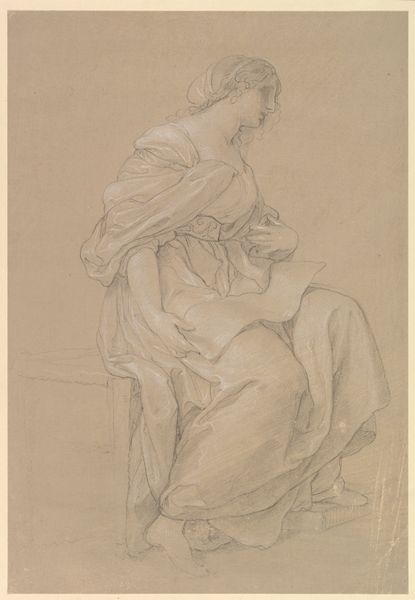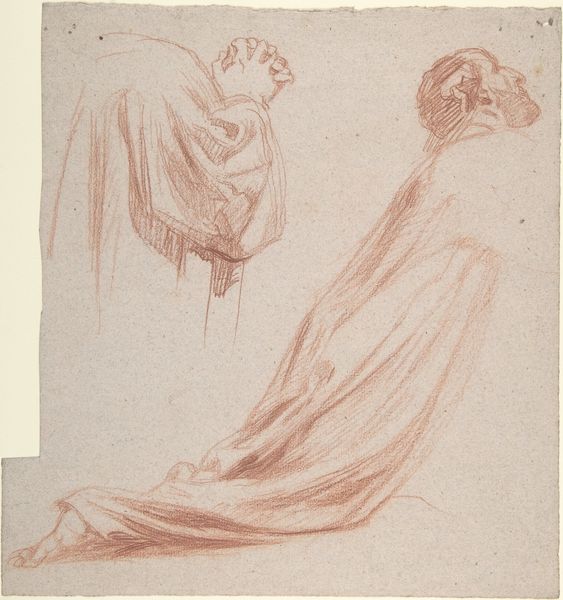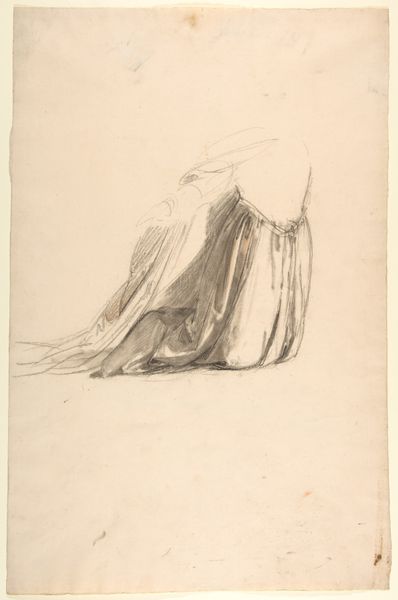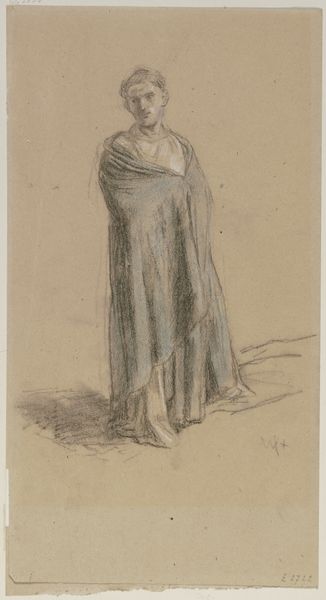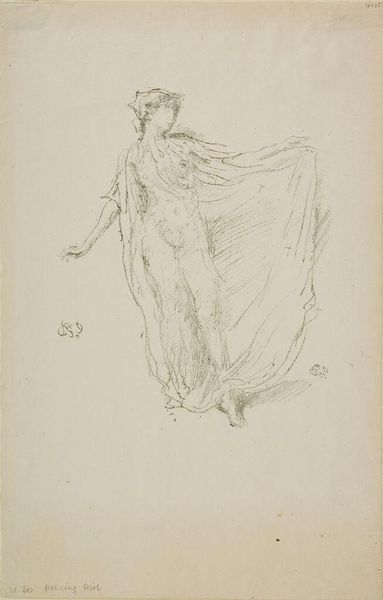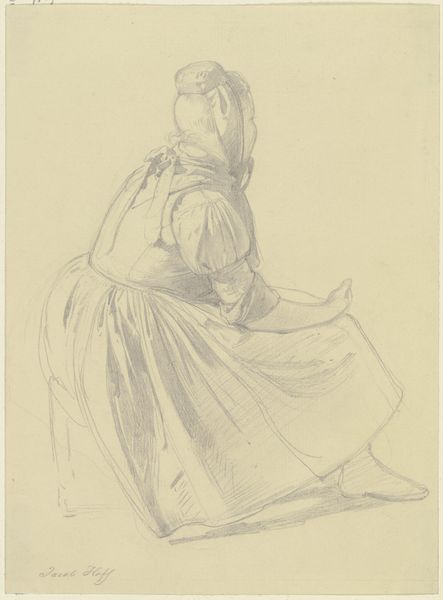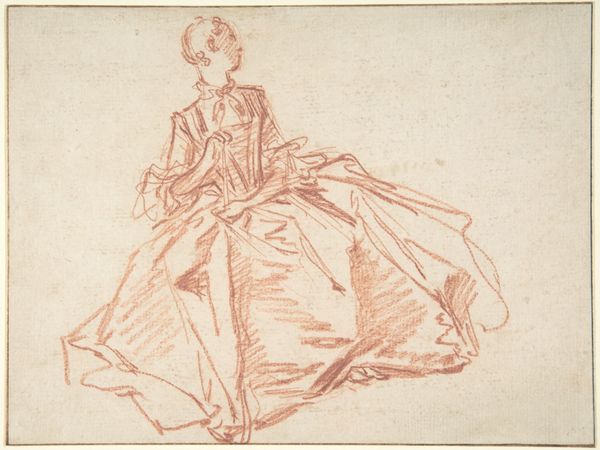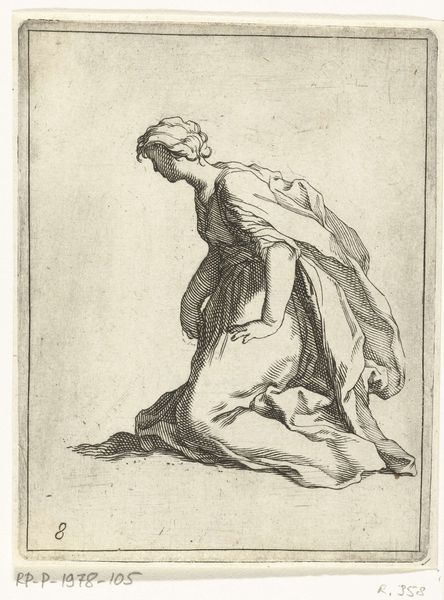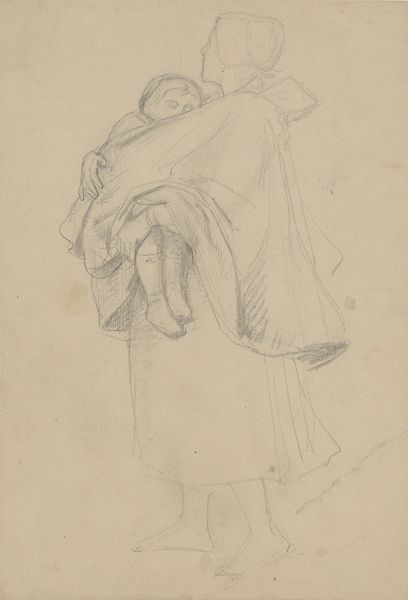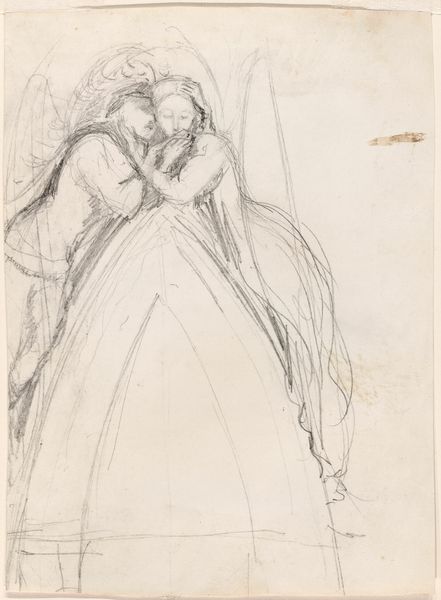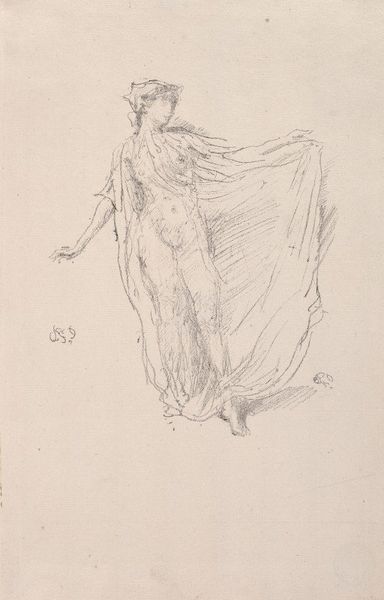
drawing, print, pencil
#
drawing
# print
#
figuration
#
pencil drawing
#
romanticism
#
pencil
#
academic-art
Dimensions: Overall: 12 5/8 x 12 1/4in. (32 x 31.1cm)
Copyright: Public Domain
Curator: I'm struck immediately by the pose; that upturned face feels less like supplication and more like... defiant hope. The artist, Alexandre Laemlein, has captured such vulnerability but also unexpected strength. Editor: Laemlein's "Kneeling Draped Figure," made sometime between 1830 and 1871, really demonstrates the academic rigor of the era. These red chalk studies were commonplace in workshops as artists honed their skills in representing the human form, even when obscured. Curator: "Obscured" is interesting; I feel the drape actually reveals more than it conceals. The flowing fabric almost animates the figure. The way it clings to the form in some places, suggests tension in the limbs, as though she's ready to leap. Do you feel it shares stylistic cues with Romanticism? Editor: Absolutely, you see those emotional undercurrents expressed through the draftsmanship—a key feature. And while Romanticism embraced emotional intensity, it’s always filtered here through classical ideals about beauty and form. The Metropolitan Museum, where it lives, would certainly agree. It really reflects art's function within institutions of learning at the time. Curator: It feels so fresh still, though! I can almost feel the scratch of the chalk on the page. And there is such grace in that curve of the neck; to convey such weight in the drapery using minimal lines is remarkable. You mention institutions: did academic figure studies usually serve another piece in development? Editor: Often, yes. Studies like this would be preparatory, exploring pose, light, and shadow before being incorporated into larger history paintings, allegories, or portraits. Think of this work in conversation with other preparatory drawings from that period—artists like Gericault. He would use preparatory works similarly for his *Raft of the Medusa*, which conveys just as much emotion and draws back to larger historic events. Curator: So this simple study embodies a long-winded history? Editor: Exactly, and remember, this image carries the history of taste. Why this drawing? How was it displayed? What did audiences respond to over time? These questions offer as much insight into history painting, as Romanticism’s own art does. Curator: Hmm, interesting! So many layers…I find the figure really is powerful, as this image inspires you to ask new questions. It feels almost as if they’re urging us to discover stories about this work, both large and small. Editor: It is really inspiring to understand the social conditions that shaped how art looks. Now when you look at this picture, what narratives come to mind?
Comments
No comments
Be the first to comment and join the conversation on the ultimate creative platform.

